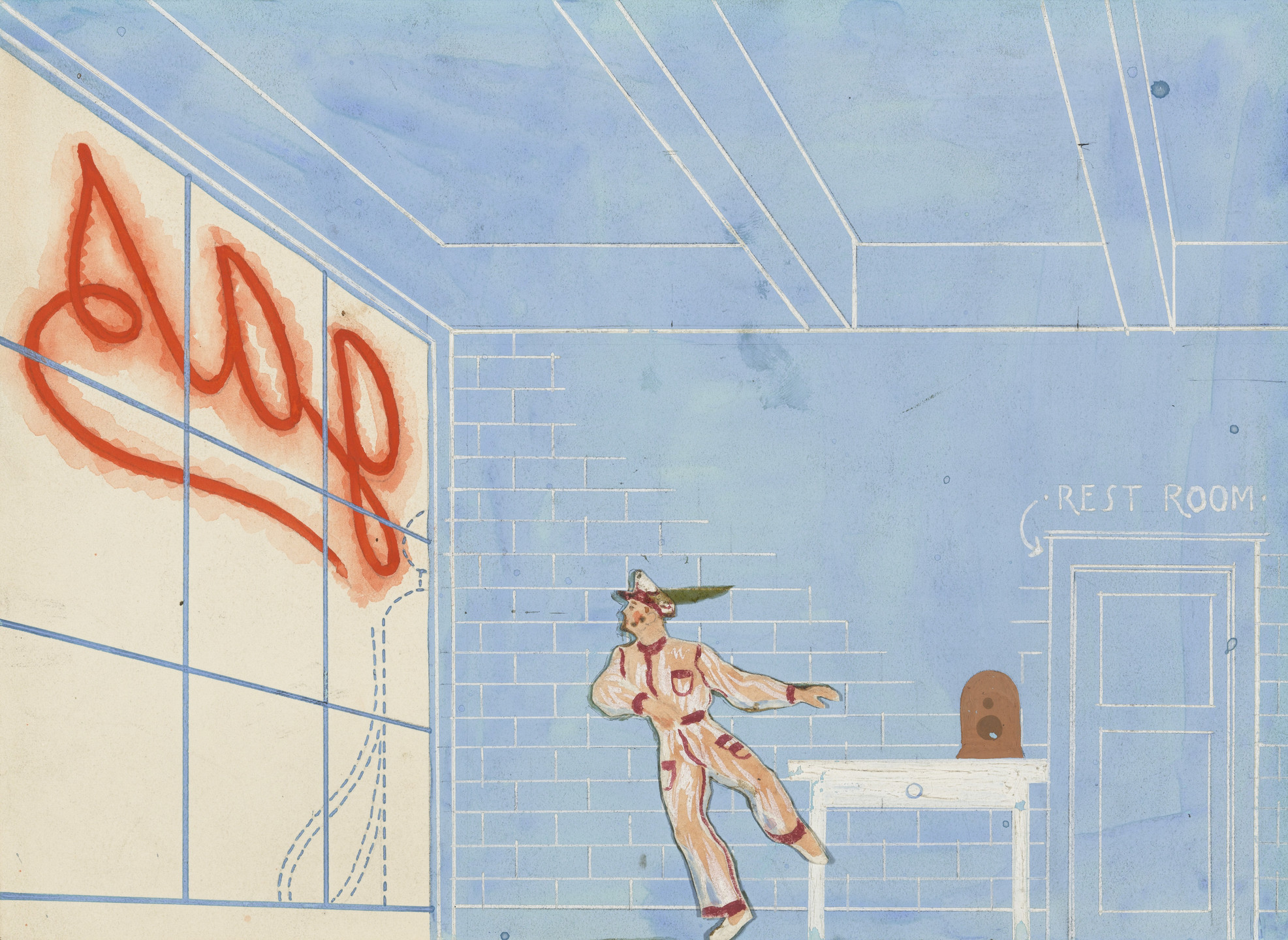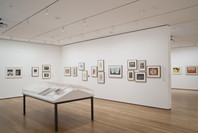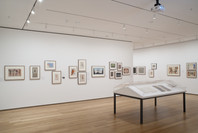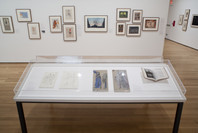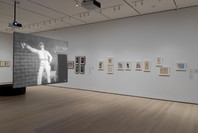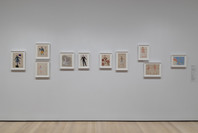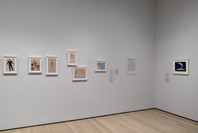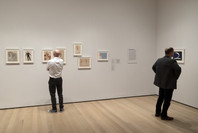In these designs for the ballet Filling Station, the artist Paul Cadmus gave vivid details to stock characters: grease-stained handprints on the character Ray’s uniform, a “slapstick” cigarette dangling from the Rich Girl’s lips, mismatched shoes and rouged knees on the Motorist’s Daughter. The transparent coveralls he imagined for the protagonist, Mac, the Filling Station Attendant, introduce a homosexual subtext, also present through the use of the prominent arrow pointing to the gas station’s “Rest Room,” a site for cruising.
Gallery label from Lincoln Kirstein’s Modern, March 17 – June 15, 2019.
For the 1938 Ballet Caravan production (premiere Hartford, Connecticut). Choreography by Lew Christensen. Music by Virgil Thomson. Book by Lincoln Kirstein
Filling Station was a keystone in the uniquely American repertory of Lincoln Kirstein's concert group, the Ballet Caravan. Founded in 1936, the Caravan represented one in a series of companies that eventually led to Kirstein's establishment of the New York City Ballet. In 1941 the company merged with American Ballet to become the American Ballet Caravan, a touring group that brought homegrown themes to audiences in South America. Filling Station, which concerns a gas-station attendant's run-ins with various patrons, received rave reviews in the United States and abroad. The ballet's subject matter allowed Cadmus to further explore themes seen in his fine–art practice: the eroticized male body and views of everyday American life.
Gallery label from Stage Pictures: Drawings for Performance, March 11–August.
